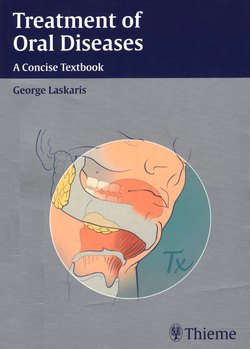Читать книгу Treatment of Oral Diseases - George Laskaris - Страница 25
ОглавлениеBenign Tumors
Definition
Benign tumors are common in the oral cavity and originate from the epithelium, connective tissue, nerves, vessels, muscles, and other oral tissues.
Etiology
The etiology of the great majority of oral benign tumors is unknown. Some of them are reactive or developmental.
Classification
•Papilloma
•Fibroma
•Peripheral ossifying fibroma
•Osteoma
•Chondroma
•Lipoma
•Myxoma
•Neurofibroma
•Schwannoma
•Traumatic neuroma
•Leiomyoma
•Rhabdomyoma
•Verruciform xanthoma
•Granular cell tumor
•Granular cell tumor of the newborn
•Fibrous histiocytoma
•Hemangioma
•Lymphangioma
•Papillary syringadenoma
•Melanotic nevi
•Melanotic neuroectodermal tumor of infancy
•Pleomorphic adenoma
•Myoepithelioma
•Other salivary gland adenomas
•Pyogenic granuloma
•Peripheral giant cell granuloma
Main Clinical Features
•Firm or soft, raised, usually well defined, asymptomatic swelling
•Tumor may be sessile or pedunculated
•Size varies from 0.5 cm to several centimeters
•Color may be normal, yellowish, white, red, bluish, or black
Diagnosis
The clinical diagnosis should be confirmed by biopsy and histopathologic examination.
Differential Diagnosis
The differential diagnosis includes all benign tumors, soft tissue cysts, and malignant neoplasms.
Treatment
•Conservative surgical excision is the treatment of choice for all benign tumors.
•Electrosurgery, laser surgery, or cryotherapy can also be used as alternative methods of treatment for some benign tumors.
•Details of the surgical procedures and techniques are beyond the scope of this book.
References
Laskaris G. Color Atlas of Oral Diseases, 3rd edition. Thieme Verlag: Stuttgart. 2003.
Neville BW, Damm DD, Allen CM, Bouquot JE. Oral and Maxillofacial Pathology. 2nd edition. WB Saunders Co, Philadelphia. 2002.
Sailer HF, Pajarola GF. Oral Surgery for the General Dentist. Thieme Verlag: Stuttgart, 1999.
